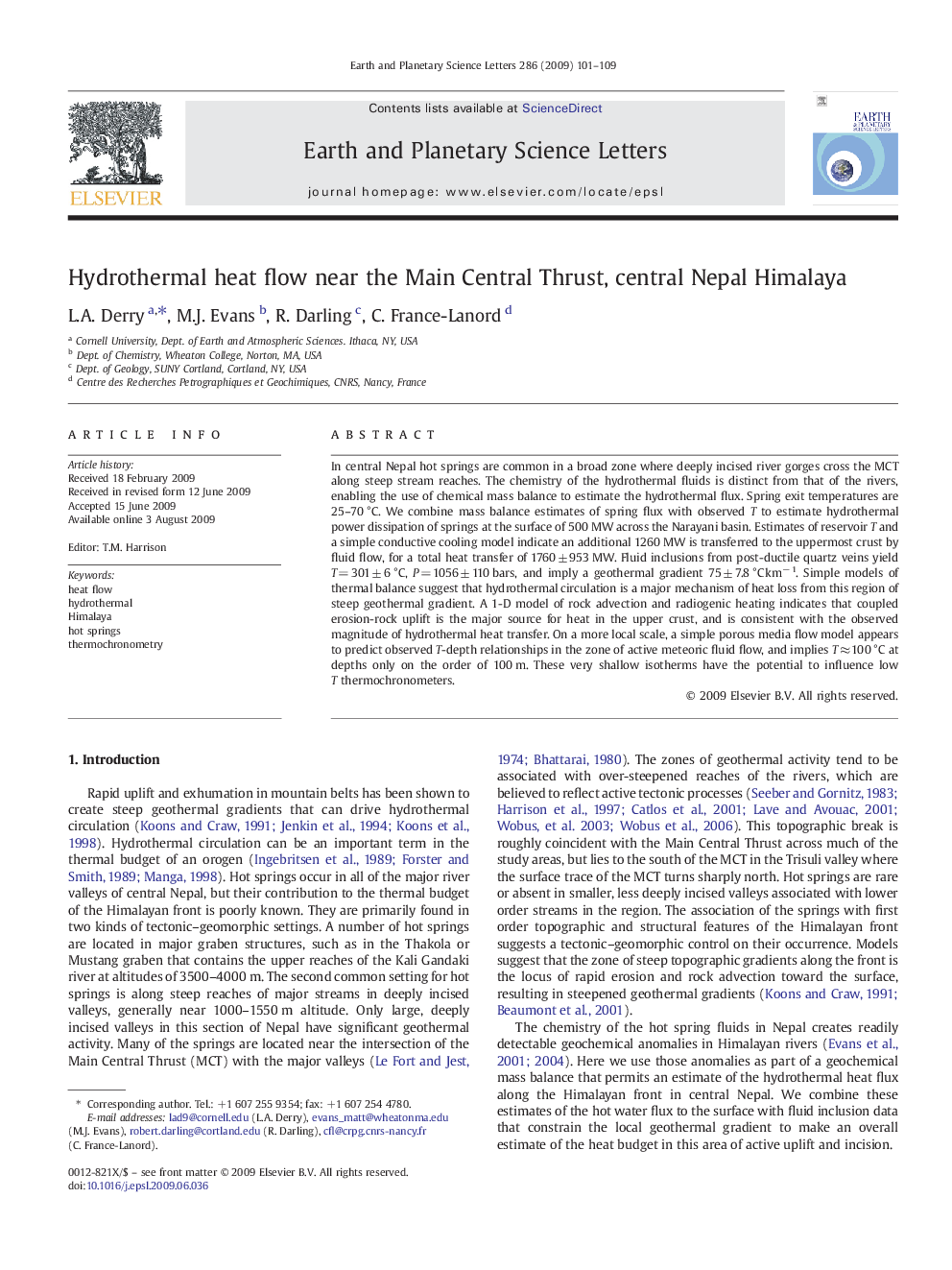| کد مقاله | کد نشریه | سال انتشار | مقاله انگلیسی | نسخه تمام متن |
|---|---|---|---|---|
| 4678872 | 1634867 | 2009 | 9 صفحه PDF | دانلود رایگان |

In central Nepal hot springs are common in a broad zone where deeply incised river gorges cross the MCT along steep stream reaches. The chemistry of the hydrothermal fluids is distinct from that of the rivers, enabling the use of chemical mass balance to estimate the hydrothermal flux. Spring exit temperatures are 25–70 °C. We combine mass balance estimates of spring flux with observed T to estimate hydrothermal power dissipation of springs at the surface of 500 MW across the Narayani basin. Estimates of reservoir T and a simple conductive cooling model indicate an additional 1260 MW is transferred to the uppermost crust by fluid flow, for a total heat transfer of 1760 ± 953 MW. Fluid inclusions from post-ductile quartz veins yield T = 301 ± 6 °C, P = 1056 ± 110 bars, and imply a geothermal gradient 75 ± 7.8 °C km− 1. Simple models of thermal balance suggest that hydrothermal circulation is a major mechanism of heat loss from this region of steep geothermal gradient. A 1-D model of rock advection and radiogenic heating indicates that coupled erosion-rock uplift is the major source for heat in the upper crust, and is consistent with the observed magnitude of hydrothermal heat transfer. On a more local scale, a simple porous media flow model appears to predict observed T-depth relationships in the zone of active meteoric fluid flow, and implies T ≈ 100 °C at depths only on the order of 100 m. These very shallow isotherms have the potential to influence low T thermochronometers.
Journal: Earth and Planetary Science Letters - Volume 286, Issues 1–2, 30 August 2009, Pages 101–109